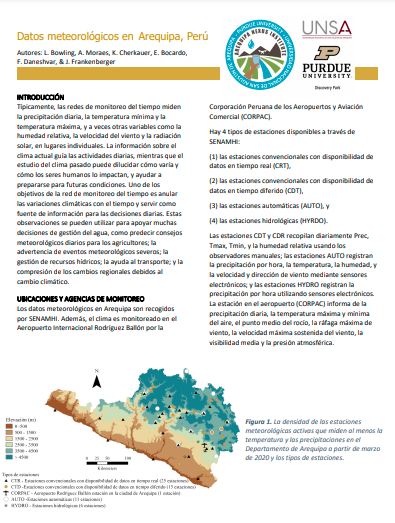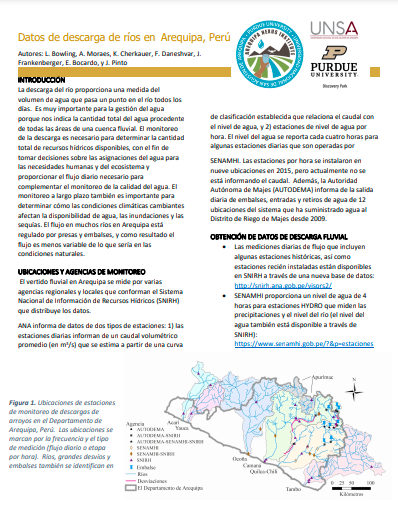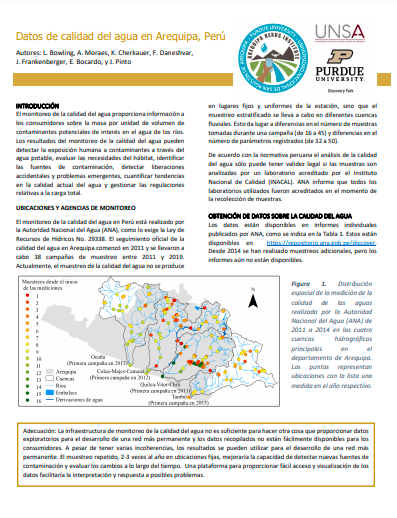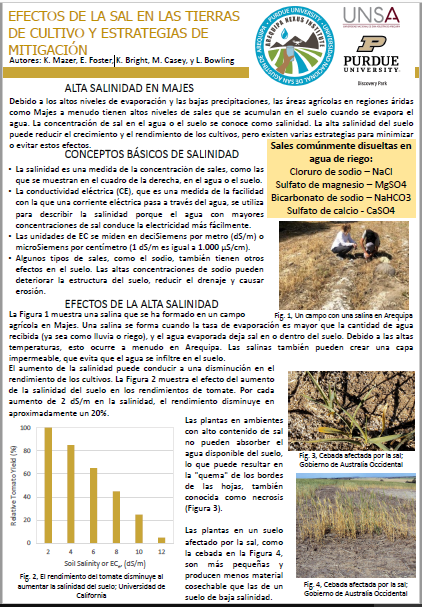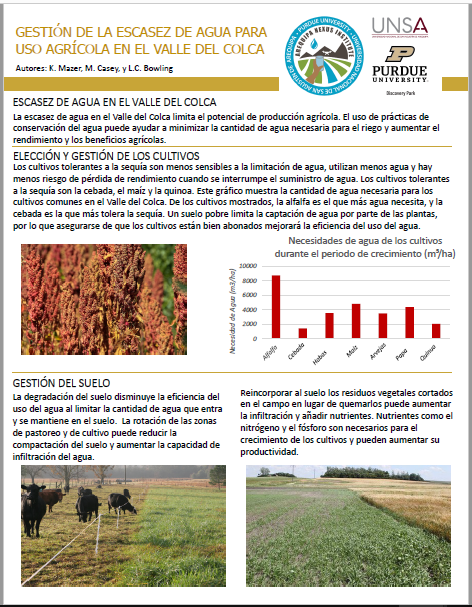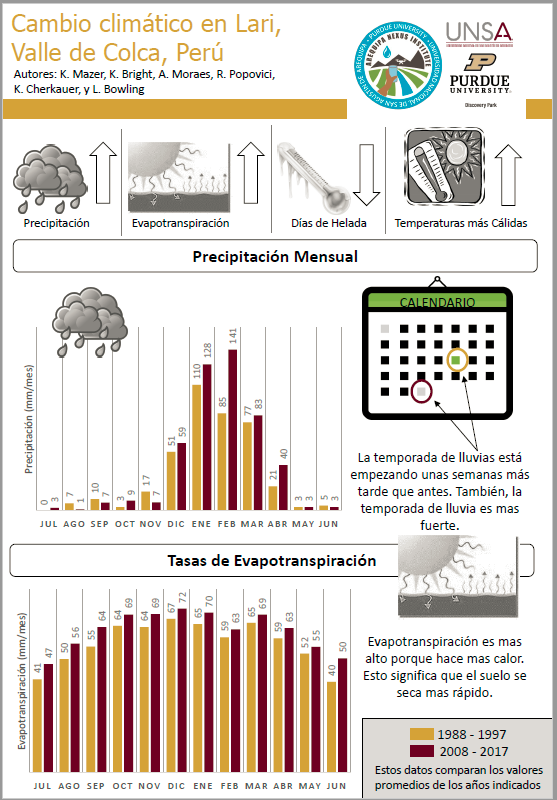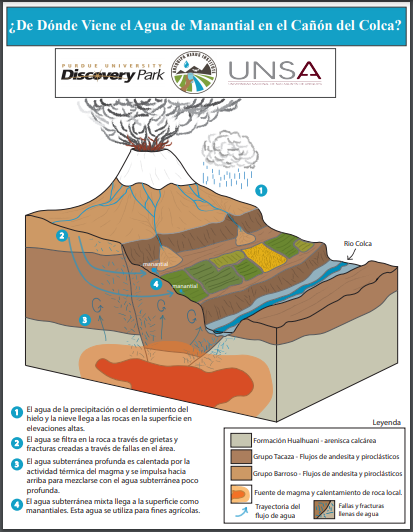Fact Sheets
Monitoring Infrastructure in Arequipa:
A series of fact sheets on hydrological data availabilityMeteorological data in Arequipa, Peru
Authors: L.C. Bowling, A.G.L. Moraes, K.A. Cherkauer, E.F. Bocardo-Delgado, F. Daneshvar, and J.R. Frankenberger
A synthesis of all available meteorological monitoring stations and associated weather data that are publically available for the Arequipa Region.
Streamflow data in Arequipa, Peru
Authors: L.C. Bowling, A.G.L. Moraes, K.A. Cherkauer, E.F. Bocardo-Delgado, F. Daneshvar, and J.R. Frankenberger
A description of available streamflow data in the four major river basins of Arequipa and an analysis of this information.
Water quality data in Arequipa, Peru
Authors: L.C. Bowling, A.G.L. Moraes, K.A. Cherkauer, F. Daneshvar, J.R. Frankenberger, E.F. Bocardo-Delgado, and J. Pinto
This factsheet provides information on available water quality data in the Arequipa Region, including distribution of sampling points, parameters sampled, and number of sampling events.
Water and Agriculture in the Majes Irrigation District
Effects of salt in cropland and mitigation strategies
Authors: K.E. Mazer, E.J. Foster, K. Bright, M. Casey, and L.C. Bowling
This factsheet provides informatin about management of the excess of salt in cropland. It gives information on how to measure and diagnose issues with salinity in your crops, and it also offers options to reduce the effects of this salinity in your crops.
Water and Agriculture in the Colca Valley
Changing Institutions in the Colca Valley
Authors: Popovici, R., Mazer, K.E., Bowling, L.C., Bocardo, E.F., and Ma, Z.
This factsheet is a summary of results from a series of interviews with farmers and local institutions in the Colca Valley that took place in Fall of 2018. Information pertains to perceived changes in climate, water management, and within the community. There are specific results related to each of the study communities.
Managing Agricultural Water Scarcity in the Colca Valley
Authors: K.E. Mazer, M. Casey, and L.C. Bowling
Water scarcity in the Colca Valley limits agricultural production potential. The use of water conservation practices can help minimize the amount of water needed for irrigation and increase yields and agricultural profits. This factsheet provides a few alternatives to minimize agricultural water use.
Climate Change in Communities in the Colca Valley
Authors: Mazer, K.E., A.G.L. Moraes, G. Scalfano, K.A. Cherkauer, and L.C. Bowling
Changes in climate, including precipitation seasonality, total rainfall, and temperature, seen over the last 30 years in the Cabanaconde District of the Colca Valley are detailed in these fact sheets. Click on one of the communities below to see a fact sheet with data specific to that community.
Where does spring water come from in the Colca Canyon?
Authors: Fekete, J., Olson, E., Welp, L., and Frisbee, M.
Information about the source and function of springs in the Colca Valley.


